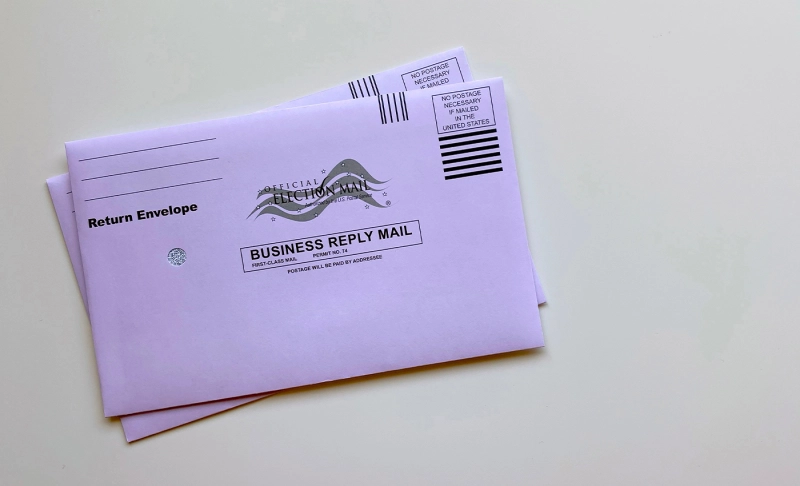By: Devika Kandelwal
August 21 2020

Several measures are built into the process to ensure that ballots are only sent to voters who are registered and require voter signature.
Several measures are built into the process to ensure that ballots are only sent to voters who are registered and require voter signature. States are making it easier for the U.S. citizens to vote absentee by mail in the upcoming 2020 Presidential elections due to the coronavirus. According to the U.S government website, every state's election rules are different, and each state has its regulations for mail-in absentee voting. Currently, many states are still deciding on how they would handle voting during the pandemic. The website clearly states that some states might automatically send citizens an absentee ballot or a form to fill out to request one due to the pandemic. It further states that a citizen must be registered to vote before their state sends them an absentee ballot. U.S President Donald Trump has repeatedly claimed that mail-in ballot increases voter fraud. In his most recent accusation, he said that 51,000,000 ballots had been sent to citizens in the U.S who have not requested one, and many who don't exist. The U.S. government website has clearly stated that depending on the states; ballots can be sent to citizens who have not requested it yet, for the states to be better prepared for the coronavirus. Further, the president's claim that many of those people don't exist amounts to fraud within mail-in voting, which Logically has refuted before. Logically found that according to a review of data from the 2016 election by The Washington Post, only four confirmed cases of voter fraud had been found. Three of whom who tried to vote for President Trump twice, and an election worker in Miami who had been caught trying to fill in someone else's ballot for a local mayoral candidate. According to the Brennan Center for Justice at New York University, there is no evidence that mail ballots increase electoral fraud. Several anti-fraud protection measures have been built into the process. These provisions include: requiring people requesting absentee ballots to be registered voters, mailing ballots to the official address listed on voter registration rolls, requiring voter signatures on the external envelope, and having election authorities make sure the ballot came from the address of an actual voter. If a ballot appears questionable, some states use a signature matching technique to verify the voter's signature. According to NYT, every registered voter in nine states will automatically be mailed an application to request an absentee ballot, which means they will not receive a ballot if they do not register. In 25 states, voters will need to procure an application for an absentee ballot themselves. In seven states, voters still need a reason beyond the virus to vote absentee. The U.S Postal Service website has not published the number of ballots they have sent out; therefore, we cannot verify whether 51,000,000 ballots have been sent out. From the protective measures listed above, and the lack of evidence about 51,000,000 ballots being sent to voters out of which many don't exist, we conclude that Trump's claim is false.